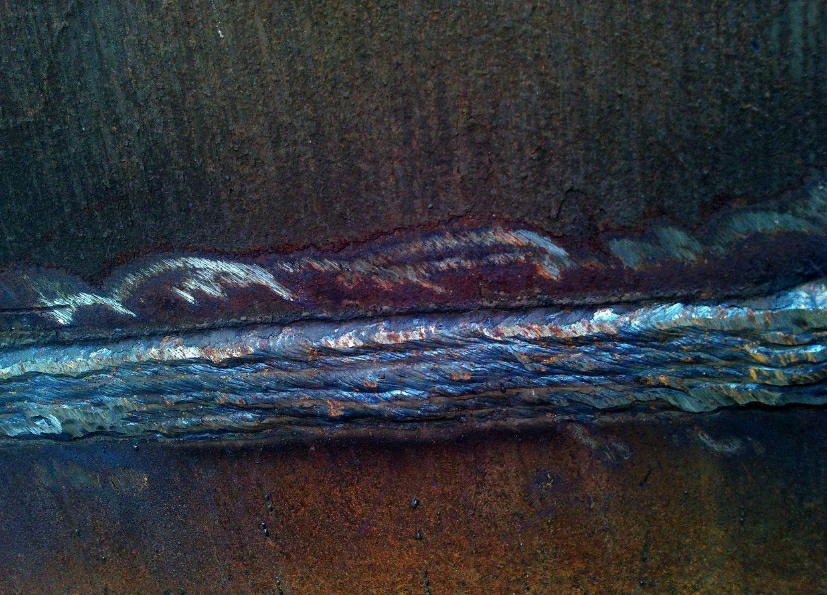Preventing Weld Undercut Made Easy: Key Techniques Introduced
Preventing Weld Undercut Made Easy: Key Techniques Introduced
Blog Article
Mastering the Art of Welding: Exactly How to Prevent Undercut Welding Issues for Flawless Fabrication Outcomes
Performance and accuracy are vital on the planet of welding, where even the least imperfection can compromise the structural integrity of a made piece. One usual challenge that welders face is undercutting, a defect that can compromise a weld joint and lead to expensive rework. By comprehending the root creates of undercut welding and applying effective strategies to avoid it, welders can boost their craft to new levels of quality (Preventing weld undercut). In the search of flawless fabrication results, understanding the art of welding to stay clear of undercut concerns is not just a skill but a necessity for those pursuing excellence in their work.
Recognizing Undercut Welding

To stop undercut welding, welders must guarantee appropriate welding parameters, such as adjusting the current, voltage, traveling speed, and preserving the right electrode angle. By comprehending the reasons of undercut welding and applying precautionary steps, welders can attain premium, structurally sound welds.
Reasons For Undercut in Welding
Understanding the elements that contribute to damage in welding is essential for welders to generate top quality, structurally sound welds. Undercutting occurs when the weld metal does not effectively load the groove created in between the base metal and the formerly deposited weld metal. A number of factors can result in damage in welding. One typical reason is too much heat input. Welding at high temperatures for prolonged durations can lead to the base steel thawing even more than preferred, bring about undercut. Poor welding existing or wrong welding speed can additionally contribute to damage. Insufficient current may not supply adequate warmth to thaw the base and filler metals sufficiently, while excessive speed can protect against appropriate blend, triggering undercut. Furthermore, incorrect electrode angles or inaccurate torch adjustment methods can create locations of reduced weld metal deposition, promoting undercut. Recognizing these reasons and implementing proper welding strategies can aid stop undercutting problems, guaranteeing sturdy and solid welds.
Techniques to Protect Against Undercutting

To alleviate the threat of undercutting in welding, welders can utilize critical welding techniques intended at boosting the top quality and integrity of the weld joints. One effective approach is to change the welding specifications, such as voltage, present, and travel speed, to guarantee appropriate warmth input and deposition. Keeping an ideal electrode angle and guaranteeing regular travel speed can also aid protect against undercut. Furthermore, making use of the proper welding strategy for the specific joint configuration, such as weave or stringer grains, can add to lowering undercutting. Preventing weld undercut.
In addition, proper joint preparation, including making certain tidy base products without contaminants and using the click over here ideal welding consumables, is critical in stopping undercut issues. Utilizing back-step welding methods and managing the weld grain profile can additionally aid disperse warm evenly and reduce the risk of undercut. Routine evaluation of the weld joint throughout and after welding, along with implementing quality control procedures, can help in finding and dealing with damaging issues immediately. By carrying out these methods carefully, welders can attain remarkable manufacture results with minimal undercut problems.
Importance of Proper Welding Parameters
Picking and keeping ideal welding specifications is important for accomplishing successful welds with very little defects. Welding parameters describe variables such as voltage, existing, travel speed, electrode angle, and protecting gas circulation rate that directly influence the welding process. These specifications should be very carefully adjusted based upon the sort of material being welded, its density, and the welding strategy employed.
Correct welding specifications guarantee the best quantity of heat is put on thaw the base steels and filler product uniformly. If the criteria are set too high, it can lead to too much warm input, causing distortion, burn-through, or spatter. On the various other hand, if the specifications are too low, insufficient fusion, lack of infiltration, click now or undercutting might take place.
Quality Guarantee in Welding Procedures

Conclusion
Finally, mastering the art of welding needs a complete understanding of undercut welding, its causes, and methods to avoid it. By ensuring proper welding specifications blog here and applying top quality guarantee practices, remarkable manufacture outcomes can be accomplished. It is necessary for welders to regularly make every effort for quality in their welding procedures to avoid undercut problems and create high-quality welds.
Undercut welding, an usual flaw in welding procedures, occurs when the weld steel doesn't correctly fill the groove and leaves a groove or clinical depression along the bonded joint.To avoid undercut welding, welders need to ensure proper welding criteria, such as readjusting the present, voltage, travel speed, and keeping the proper electrode angle. Insufficient welding wrong or current welding rate can likewise contribute to damage.To minimize the threat of damaging in welding, welders can use strategic welding methods aimed at enhancing the high quality and stability of the weld joints.In final thought, grasping the art of welding requires an extensive understanding of undercut welding, its causes, and techniques to avoid it.
Report this page